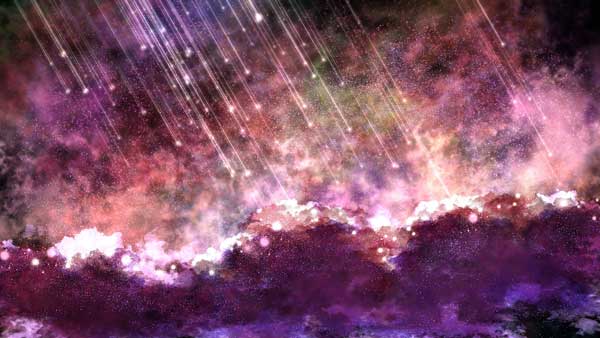Friday, December 23, 2022

Fragments of another world slipping through the night sky – like dazzling raindrops on a glass screen.
As we bid goodbye to another year and welcome 2023 with new hopes, dreams and desires, here’s a starry note for your fresh start. There will be a spectacular display of celestial wonders for stargazers to witness.
A brilliant comet, a rare hybrid solar eclipse, and other unparalleled astronomical events. Check out the list below and mark your calendar for the greatest astronomy nights! So forget about your city hustle for a while and mark your calendar for the greatest astronomy nights!
Quadrantid meteor shower peak : January 3 and 4
The Quadrantids start the year off, one of the most active meteor showers with an hourly rate ranging from 60 to 200. Fireballs are also renowned in this magnificent downpour. Sadly, the peak in 2023 happens to be two days before the Full Moon. You’ll have 1-2 hours without the 92%-illuminated Moon lighting up the sky if you start your observations in the morning, between moonset and sunrise. In the Northern Hemisphere, the radiant is always high in the sky. It is more likely to rise over the horizon during the day the further south it is.

The crescent moon unites with the ringed world and the goddess of love : January 23
Catch the magnificent radiance from the whisker-thin crescent moon emerge into view in the southwestern sky on January 23 within an hour or two after sunset. Venus and Saturn, two brilliant planets, will be located immediately below. One degree will separate the worlds, allowing spectators to see both at once with binoculars or even a home telescope. Venus will easily outshine Saturn with its dazzling brightness.
Comet C/2022 E3 (ZTF) becomes the brightest : February 1
Comet C/2022 E3 (ZTF) will pass through perihelion towards the end of January 2023, and on February 1 it will be the closest to the Earth. The comet will be at its brightest on this day, making it the ideal opportunity to watch it. Right now, a telescope can detect C/2022 E3 (ZTF). It will become brilliant enough by early February to be seen via binoculars or, according to some predictions, even with the unaided eye. Be sure not to miss it since it is the only bright comet this year.
A rare hybrid solar eclipse : April 20
The partial eclipse will be visible over all of Indonesia, Australia, Papua New Guinea, and several other regions in the western Pacific, but only a tiny number of individuals will be in the right place to experience the full or annular eclipse. A rare hybrid solar eclipse, only a handful of lucky skygazers in a tiny area of the Eastern Hemisphere can see it. It will be annular in some areas and complete in others. The moon is surrounded by a ring of sunlight as it passes in front of the sun during an annular eclipse, commonly known as a “ring of fire” eclipse.
Lunar Occultation of Jupiter : May 22 and 23
As soon as the sun goes down on May 22, observe a stunning rendezvous of the moon, Mars, and Venus, three of our nearest and brightest neighbouring planets. The shimmering trio will create an arc in the western sky and hang close together. Watch for the crescent moon to pass between Venus and Mars on May 23. With binoculars, you can get a closer look and see that Castor and Pollux, two prominent stars in the Gemini constellation, have also joined the moon.

Peak of the Perseid meteor shower : August 12 and 13
For these fireworks, forget about the binoculars and telescopes. The unassisted eye has a better chance of seeing the shooting stars passing by since the Perseids meteors cover a huge area of the sky. With a peak around August 13, it will run from July 17 through August 24. Around midnight local time, look for its radiant point in the constellation Perseus. You could be able to observe up to 100 meteors each hour under optimal circumstances. What stands out in 2023 is that the fading crescent Moon will be 10% lit, so it won’t obscure the view.
An ethereal ring of fire : October 14
Spectators from the United States, Mexico, Belize, Honduras, Nicaragua, Panama, Colombia, and Brazil will be able to watch the annular solar eclipse on October 14 from 15:05 to 20:55 GMT (from 11:05 a.m. to 04:55 p.m. EDT). The Sun’s centre will be hidden by the Moon, and onlookers will see “the ring of fire” surrounding it.

Jupiter shines like a diamond : November 3
Jupiter is typically visible since it is the third brightest object in the night sky (after the Moon and Venus). The big bright giant will reach opposition on November 3, 2023, and shine in the constellation Aries at its brightest for the entire year (with an apparent brightness of -2.9). You can view the planet with an unaided eye, but get some binoculars or a telescope to view the magical Gallelian moons.
Geminids the gem : December 13 and 14
The year shall be wrapped up with possibly the best meteor shower of the year, with up to 120 meteors per hour as per the estimates. And skywatchers will be treated to even the faintest shooting stars this year, with a nearly new moon out of the night sky entirely.
Tags: 2023, events, Quadrantid
Monday, January 1, 2024